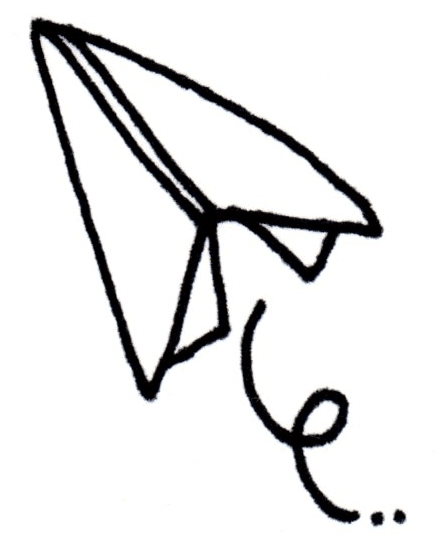Hand washing: How to keep eczema prone hands clean and healthy



Sensitive, eczema prone skin often doesn’t take kindly to regular hand washing and sanitizing. Both hand soap and alcohol, the active ingredient in sanitisers, strip the natural oils from the skin’s surface along with the dirt.
It doesn’t take long for sensitive skin to become dry, sore and prone to cracking. We share our top tips and strategies for keeping little (and not so little) hands intact and hygienic.
Our tops tips for keeping eczema-prone hands clean and healthy
- Look at the soap you are using and check that it is low pH and free from common irritants (more on this below).
- Take soap with you so you can wash your hands when you’re away from home. We find that hard soaps are easier to transport and less prone to spillages then liquid soap. Do make sure you keep the outside of the container clean – wash the box or bottle at the same time as you wash your hands.
- Make sure all traces of soap are rinsed away before drying hands thoroughly.
- Avoid over drying with hot hand air-dryers.
- Pat skin dry with a clean towel.
- Consider investing in a micro-fibre towel as they tend to be kinder on the skin than regular towels.
- Find a sanitizer with added moisturizer for the times you can’t get to a sink to wash your hands (more below).
- Leave emollient or hand cream by the sink so you are reminded to moisturise every time hands are washed.
- Dry hands may need a more greasy emollient, with a higher lipid content, than you need for the rest of the body. Your GP may be able to prescribe an ointment especially for use on the hands. We love the Body Shop Hemp Hand Protector.
- Invest in travel-sized hand cream to use when you are away from home. As with soap containers, make sure you keep the outside of the tube clean.
- Moisturize your hands over-night by smothering them in emollient and covering them in a pair of cotton socks to keep the cream in place. If your little one won’t keep socks over their hands consider using ScratchSleeves instead.
Which soaps are best for eczema prone hands?
As with all things eczema related, finding a soap that works for you and your family is a case of trial and error.
Soaps and hand cleansers come in a variety of forms – understanding the differences between these different types can really help when you’re standing in front of the bewildering array of options on the supermarket shelves.
Hard soaps
Traditional soap bars are typically based on plant or animal fats have a reputation for being hard on the skin. Many popular brands of hard soap have a high pH level, which can be very drying.
However, there are many hard soaps with much lower pH levels and much reduced or even negligible drying effects. Vanicream Cleansing Bar and Avene Soap bars both have a pH only just above that of the skin and are designed specifically for sensitive skin.
But beware of marketing hype, Johnson’s Baby Soap – which you would think would be gentle on the skin – has a pH of 11.9. You can find a list of popular soap brands with their pH values here.
Look out for transparent glycerin soap bars. These typically have lower pH levels and contain lots of moisturizing glycerin which helps restore the skin’s natural oils. This was my soap of choice when I was growing up but it’s much harder to get hold of these days. Alternatively, check our blog on how to make your own eczema friendly soap.

Liquid soap
Liquid soaps typically have lower pH levels than soap bars, so are usually seen as being kinder on the skin than hard soaps.
However, they often contain irritating ingredients including sodium laureth sulphate (SLS), parabens and methylchloroisothiazolinone (MCI), all of which are common triggers for eczema flare-ups.
A study comparing 50 popular hard soaps with 50 liquid soaps and body washes found that liquid soaps contained much higher proportions of irritating preservatives and foaming agents than hard soap1.
That said, liquid soaps designed especially for sensitive and dry skin, usually exclude these damaging ingredients and can also contain moisturizers which counter the drying nature of the detergent element.
We love the Child’s Farm Children’s Moisturising Hand Wash and Faith in Nature Natural Hand Wash.
Foaming hand wash
Foaming hand wash is the biggest culprit for eczema flare-ups on our family’s hands. The foaming agents are usually SLS, which is a common eczema trigger.
The foaming hand wash also contains alcohol, which is great for killing germs but also strips away the skin’s natural acid mantle, dehydrating cells and leave the skin more vulnerable to attack from irritants, allergens, bacteria, and viruses.
A study published in 2003 found that doctors who were using alcohol-based cleansers to get germs off their hands had low levels “barrier lipids” (healthy fats in the skin) in their hands which caused the skin to lose moisture and hydration2.
Evidence showed that foaming liquid hand wash was the major offender and that replacing it with alcohol-free alternatives reduced hand problems among hospital staff.
Hand sanitizers
Hand sanitizers can be particularly hard on the skin. Soap and water kill and flush germs from the skin. Hand sanitisers work by sitting on skin and killing germs on contact. But they only work if they contain enough alcohol to kill the germs—at least 60 per cent. Once you apply the alcohol, it begins to evaporate, it’s this evaporation that kills the germs. If you rub off the sanitizer before it fully evaporates, you’re actually reducing its effectiveness.
As with the foaming handwashes, the alcohol in sanitisers can disrupt the natural barrier function, reducing skin’s ability to protect itself, and leading to increased dehydration. Again, as with foaming handwashes, many sanitizers also contain irritating SLS. There are hand sanitisers available designed to minimise the drying effect. These sanitisers have added moisturising ingredients such as glycerin and Aloe vera which will counter the drying effect of the alcohol.
We are using the Carex Aloe Vera sanitizer at the moment, with minimal side effects. However, given that sanitisers aren’t as effective as soap and water, it makes sense to only use them if washing with soap and water isn’t practical.
Also, check out our blog on how to make handwashing a fun activity for kids.
In conclusion:
- Use hard soaps wherever possible, with glycerine ideally
- Dry hands extra carefully
- Moisturise, moisturise and moisturise!
Our references:
- Comparison of Contact Allergens in Bar Soaps and Liquid Body Washes. JA Siegel, JS Mounessa, RP Dellavalle, CA. Dermatitis: January/February 2018 – Volume 29 – Issue 1 – p 51-53
- Hand hygiene and skin health. E Kownatzki Journal of Hospital Infections. 2003 Dec;55(4):239-45.
Here at ScratchSleeves, we don’t just share our experiences of bringing up an eczema child (and favourite allergy-friendly recipes), we also manufacture and sell our unique stay-on scratch mitts and PJs for itchy babies, toddlers and children. We now stock sizes from 0-adult years in a range of colours. Visit our webshop for more information.
The Calm Skin Guide
Love our blog? It's also available in book format with:
- First hand accounts from parents & medical professionals
- Easy navigation
- Comprehensive index
- Additional material
Signed copies available at no extra cost
Written by:
Interesting article? Don't keep it to yourself...
Read next...
You may also find helpful...
Quick buy


Multi Buy Discount

Spend between £30 - £60 and save 5%
Spend between £60 - £120 and save 10%
Spend over £120 and save 15%
Discount automatically applied at checkout
No Quibbles Guarantee

ScratchSleeves abide by a no quibbles guarantee.
Free UK Postage

Free packing and postage on all UK orders. For overseas orders to Europe postage is from £3.50, to USA is £6.50 and to the rest of the world, from £3.75.






